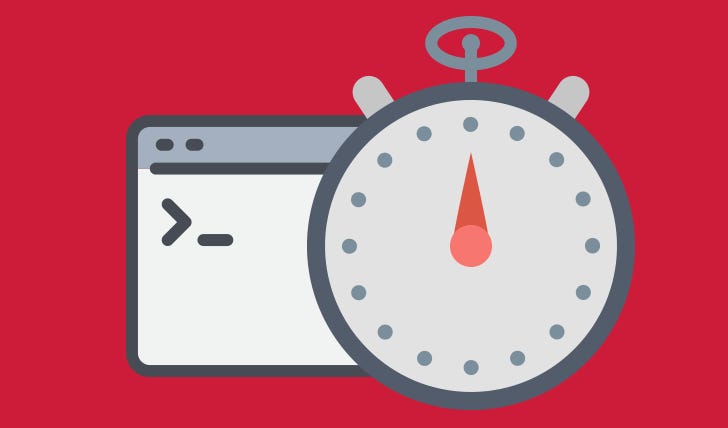前言
去年博主写了一篇关于Cloudflare自动开启 5 秒盾的文章Cloudflare 系统负载超过一定的值时 自动切换 5 秒盾脚本,只限于自动开启 5 秒盾不会自动开启验证码,下面就介绍下可以选择同时开启 5 秒盾和验证码的脚本。
脚本开源地址
更多关于安全优化
使用方法
此脚本是通过检测系统负载(cpu 或 load)自动开启Cloudflare UAM 和 challenge(验证码)
注意!默认 challenge=1,将在开启 UAM 的同时开启验证码。如果你不想,请将它设为 0
不要修改或删除 status.txt 和 filter.txt 和 ruleid.txt,记录攻击状态和规则 id 的。
#!/bin/bash
#
# Usage:
# screen -dmS autouam &&
# screen -x -S autouam -p 0 -X stuff "bash /root/autouam.sh" &&
# screen -x -S autouam -p 0 -X stuff $'\n'
#
mode="load"
# 两种模式可选,一:cpu 二:load
challenge="1"
# 是否同时开启验证码质询 设为 1 即开启
keeptime="30"
# ≈开盾最小时间,如 60 则开盾 60 秒内负载降低不会关,60 秒后关
interval="0.5"
# 检测间隔时间,默认 0.5 秒
email="눈_눈"
# CloudFlare 账号邮箱
api_key="눈_눈"
# CloudFlare API KEY
zone_id="눈_눈"
# 区域 ID 在域名的概述页面获取
default_security_level="high"
# 默认安全等级 关闭 UAM 时将会把安全等级调整为它
api_url="https://api.cloudflare.com/client/v4/zones/$zone_id/settings/security_level"
# API 的地址
api_url1="https://api.cloudflare.com/client/v4/zones/$zone_id/firewall/rules"
# API 的地址之二
api_url2="https://api.cloudflare.com/client/v4/zones/$zone_id/filters"
# API 的地址之三
# 安装依赖
if [ ! $(which jq 2> /dev/null) ]; then
echo "jq not found!"
if [ -f "/usr/bin/yum" ] && [ -d "/etc/yum.repos.d" ]; then
yum install jq -y
elif [ -f "/usr/bin/apt-get" ] && [ -f "/usr/bin/dpkg" ]; then
apt-get install jq -y
fi
fi
for((;;))
do
if [ "$mode" = "cpu" ];
then
check=90 #5 秒内 CPU 连续超过 80 则开启 UAM【可以根据您的服务器负荷情况调整】
#系统空闲时间
TIME_INTERVAL=5
time=$(date "+%Y-%m-%d %H:%M:%S")
LAST_CPU_INFO=$(cat /proc/stat | grep -w cpu | awk '{print $2,$3,$4,$5,$6,$7,$8}')
LAST_SYS_IDLE=$(echo $LAST_CPU_INFO | awk '{print $4}')
LAST_TOTAL_CPU_T=$(echo $LAST_CPU_INFO | awk '{print $1+$2+$3+$4+$5+$6+$7}')
sleep ${TIME_INTERVAL}
NEXT_CPU_INFO=$(cat /proc/stat | grep -w cpu | awk '{print $2,$3,$4,$5,$6,$7,$8}')
NEXT_SYS_IDLE=$(echo $NEXT_CPU_INFO | awk '{print $4}')
NEXT_TOTAL_CPU_T=$(echo $NEXT_CPU_INFO | awk '{print $1+$2+$3+$4+$5+$6+$7}')
#系统空闲时间
SYSTEM_IDLE=`echo ${NEXT_SYS_IDLE} ${LAST_SYS_IDLE} | awk '{print $1-$2}'`
#CPU 总时间
TOTAL_TIME=`echo ${NEXT_TOTAL_CPU_T} ${LAST_TOTAL_CPU_T} | awk '{print $1-$2}'`
load=`echo ${SYSTEM_IDLE} ${TOTAL_TIME} | awk '{printf "%.2f", 100-$1/$2*100}'`
else
load=$(cat /proc/loadavg | colrm 5)
check=$(cat /proc/cpuinfo | grep "processor" | wc -l)
fi
if [ ! -f "status.txt" ];then
echo "" > status.txt
else
status=$(cat status.txt)
fi
if [ -f "ruleid.txt" ]; then
ruleid=$(cat ruleid.txt)
fi
if [ -f "filterid.txt" ]; then
filterid=$(cat filterid.txt)
fi
now=$(date +%s)
time=$(date +%s -r status.txt)
echo "当前$mode 负载:$load"
if [[ $status -eq 1 ]]
then
echo "UAM ON!"
if [ "$challenge" -eq 1 ]; then
echo "Challenge ON!"
fi
else
echo "UAM OFF!"
if [ "$challenge" -eq 1 ]; then
echo "Challenge OFF!"
fi
fi
newtime=`expr $now - $time`
closetime=`expr $keeptime - $newtime`
if [[ $load <$check ]]&&[[ $status -eq 1 ]]&&[[ $newtime -gt $keeptime ]]
then
echo -e "\n$mode 负载低于$check,当前已开盾超过规定时间$newtime 秒,尝试调整至默认安全等级($default_security_level)"
# Disable Under Attack Mode
result=$(curl -X PATCH "$api_url" \
-H "X-Auth-Email: $email" \
-H "X-Auth-Key: $api_key" \
-H "Content-Type: application/json" \
--data "{
\"value\": \"$default_security_level\"
}" --silent \
| jq -r '.success')
if [ "$result" = "true" ]; then
echo 0 > status.txt
echo -e "\n 成功"
fi
if [ "$challenge" -eq 1 ]; then
result=$(curl -X DELETE "$api_url1/$ruleid" \
-H "X-Auth-Email: $email" \
-H "X-Auth-Key: $api_key" \
-H "Content-Type: application/json" \
--silent)
result1=$(curl -X DELETE "$api_url2/$filterid" \
-H "X-Auth-Email: $email" \
-H "X-Auth-Key: $api_key" \
-H "Content-Type: application/json" \
--silent)
if [ $(echo $result | jq -r '.success') -a $(echo $result1 | jq -r '.success') ]; then
echo -e "\n 验证码关闭成功"
fi
fi
elif [[ $load <$check ]]
then
echo -e "\n$mode 负载低于$check,不做任何改变,状态持续了$newtime 秒"
if [[ $status -eq 1 ]]
then
echo -e "将于$closetime 秒后调整安全等级至$default_security_level"
fi
elif [[ $load >$check ]] && [[ $status -eq 1 ]] && [[ $newtime -gt $keeptime ]]
then
echo -e "\n$mode 负载高于$check,当前已开启 UAM 超过$keeptime 秒,UAM 无效"
elif [[ $load >$check ]] && [[ $status -eq 1 ]]
then
echo -e "\n$mode 负载高于$check,当前已开启($newtime 秒),请再观察"
elif [[ $load >$check ]]
then
echo -e "\n$mode 负载高于$check,开启 UAM"
# Enable Under Attack Mode
result=$(curl -X PATCH "$api_url" \
-H "X-Auth-Email: $email" \
-H "X-Auth-Key: $api_key" \
-H "Content-Type: application/json" \
--data "{
\"value\": \"under_attack\"
}" --silent \
| jq -r '.success')
if [ "$result" = "true" ]; then
echo 1 > status.txt
echo -e "\n 成功"
fi
if [ "$challenge" -eq 1 ]; then
while :
do
result=$(curl -X POST "$api_url2" \
-H "X-Auth-Email: $email" \
-H "X-Auth-Key: $api_key" \
-H "Content-Type: application/json" \
--data '[{
"expression": "(not cf.client.bot)"
}]' --silent)
if [ $(echo $result | jq -r '.success') == "true" ]; then
filterid=$(echo $result | jq -r '.result[].id')
else
filterid=$(echo $result | jq -r '.errors[].meta.id')
for i in $filterid
do
result1=$(curl -X DELETE "$api_url2/$i" \
-H "X-Auth-Email: $email" \
-H "X-Auth-Key: $api_key" \
-H "Content-Type: application/json" --silent)
done
if [ $(echo $result1 | jq -r '.success') ]; then
echo "\n 冲突的 filter 删除成功"
fi
fi
if [ $(echo $result | jq -r '.success') == "true" ]; then
break
fi
done
result=$(curl -X POST "$api_url1" \
-H "X-Auth-Email: $email" \
-H "X-Auth-Key: $api_key" \
-H "Content-Type: application/json" \
--data "[{
\"action\": \"challenge\",
\"filter\": {
\"id\": \"$filterid\",
\"expression\": \"(not cf.client.bot)\"
}
}]" --silent)
if [ $(echo $result | jq -r '.success') == "true" ]; then
ruleid=$(echo $result | jq -r '.result[].id')
echo "$filterid" > filterid.txt
echo "$ruleid" > ruleid.txt
echo -e "验证码开启成功,规则 id:$ruleid"
fi
fi
else
echo 0 > status.txt
fi
sleep $interval
clear
done在 dash.cloudflare.com 生成过去 apikey,将它们填入脚本内,ssh 执行下面启动脚本,注意替换脚本路径
screen -dmS autouam && screen -x -S autouam -p 0 -X stuff "bash /root/autouam.sh" && screen -x -S autouam -p 0 -X stuff $'\n'然后再执行
screen -r autouam -d查看运行状态,接下来 ctrl+A + ctrl+D 断开 screen,脚本继续运行
© 本站文章随意转载,但请注明出处!
>> 如果您觉得本站文章对您有所帮助,购买 VPS 时候请走本站AFF链接!
>> 某些文章具有时效性,若内容有错误或已失效,欢迎在下方评论区留言向我们反馈.
>> 所有文章均基于分享的原则,所有言论均个人观点,请注意全部都不是推荐,是分享!分享!分享!
>> 所有文章均基于分享的原则,所有言论均个人观点,请注意全部都不是推荐,是分享!分享!分享!
THE END

![图片[1] - #教程# Cloudflare 可选择同时自动开启5秒盾和验证码脚本 - 云线路](/wp-content/uploads/2019/01/Cloudflare.png)











